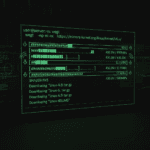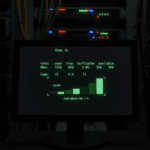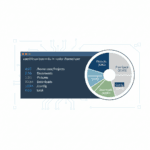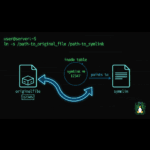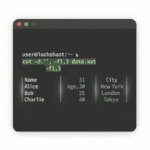Advertisement: Racknerd.promo – Affordable and Reliable Servers
Troubleshooting Common Linux Boot Problems: A Comprehensive Guide
Booting problems can be frustrating for Linux users. This guide provides a comprehensive approach to troubleshooting common boot issues, helping you get your system back up and running. Racknerd.promo offers reliable servers if you need a fresh start or backup.
Understanding the Boot Process
The Linux boot process involves several stages:

- BIOS/UEFI: Initializes hardware and selects the boot device.
- Bootloader (GRUB/LILO): Loads the kernel and initial RAM disk.
- Kernel: Initializes the system and mounts the root file system.
- Init System (systemd/SysVinit): Starts system services.
Common Boot Problems and Solutions
1. GRUB Errors
GRUB (Grand Unified Bootloader) errors are common. Here’s how to troubleshoot them:
a. “Error: file not found”
This usually means GRUB can’t find the kernel or initrd image.
Solution:
# Boot into a live environment
# Mount your root partition
mount /dev/sda1 /mnt
# Mount necessary virtual file systems
mount -t proc proc /mnt/proc
mount -t sysfs sys /mnt/sys
mount -o bind /dev /mnt/dev
mount -t devtmpfs devtmpfs /mnt/dev/pts
# Chroot into your installed system
chroot /mnt
# Reinstall GRUB
grub-install /dev/sda
# Update GRUB configuration
update-grub
# Exit chroot and unmount
exit
umount /mnt/dev/pts
umount /mnt/dev
umount /mnt/sys
umount /mnt/proc
umount /mnt
b. “Error: no such partition”
GRUB can’t find the partition specified in its configuration.
Solution:
Check your /boot/grub/grub.cfg file (or /boot/grub2/grub.cfg) for incorrect partition UUIDs or device names. Use blkid to identify the correct UUIDs.
blkid
2. Kernel Panic
A kernel panic indicates a serious system error.
Solution:
Examine the error message for clues. Common causes include:
- Missing or corrupt kernel modules: Try booting with an older kernel version.
- Hardware issues: Run memory tests (e.g., Memtest86+).
- File system corruption: Run
fsckon the root partition. - Graphics driver issues: Blacklisting the driver can sometimes resolve this.
fsck /dev/sda1
3. Init System Failures
Problems with systemd or SysVinit can prevent the system from starting services.
Solution:
Check the system logs for errors:
journalctl -b
# or
dmesg
If a specific service is failing, try restarting it manually:
systemctl restart failing-service.service
4. File System Corruption
A corrupted file system can cause various boot problems.
Solution:
Run fsck on the affected partition. It’s best to do this from a live environment.
fsck /dev/sda1
5. Hardware Issues
Hardware problems can manifest as boot failures.
Solution:
- Memory: Use Memtest86+ to test your RAM.
- Hard drive: Check for SMART errors using
smartctl.
smartctl -a /dev/sda
Preventative Measures
To minimize boot problems:
- Regular backups: Use tools like
rsyncorBacula. - Keep your system updated: Apply security patches and updates regularly.
- Monitor system health: Use tools like
NagiosorZabbix.
Real-World Scenario: My Recent Boot Nightmare
Just last week, I was upgrading my home server, which runs Ubuntu Server, and I ran into a boot loop after a seemingly successful kernel update. The system would power on, show the GRUB menu, and then… nothing. Just a blank screen. I tried booting into older kernels from the GRUB menu, but no luck. Each attempt resulted in the same black screen of despair.
After several frustrating hours, I realized that the update process had likely corrupted the initramfs image for the new kernel. Thankfully, I had a live USB drive handy. I booted from the live environment and chrooted into my server’s root partition, as described earlier in this guide. Then, I regenerated the initramfs image for the problematic kernel:
update-initramfs -c -k 5.15.0-101-generic
(Replace 5.15.0-101-generic with the actual kernel version you’re having trouble with.)
After that, I rebooted, and to my immense relief, the server booted successfully! It was a good reminder of the importance of having a bootable rescue environment and knowing how to use it.
Conclusion
Troubleshooting Linux boot problems requires a systematic approach. By understanding the boot process and common error scenarios, you can effectively diagnose and resolve issues. Racknerd.promo provides reliable servers if you need a fresh start or backup.
Advertisement: Racknerd.promo – Affordable and Reliable Servers


